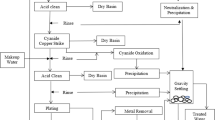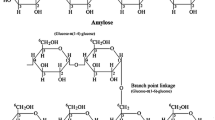Abstract
Breaking down sludge floc (sonodyspergation effect) and destruction of the cell membranes of microorganisms forming floc is a direct effect of ultrasonic disintegration of sludge excess. This results in release of organic material by liquid sludge (the sonolysis effect). Desired technological effects of the disintegration are: to shorten the hydrolytic phase of fermentation, to increase the production of biogas (source of renewable energy) and an increased mineralization (stability) of fermented sludge. The presented study demonstrates research covering thickened excess sludge of various physicochemical properties, collected from nine municipal sewage treatment plants. The sludge was subjected to ultrasonic disintegration using three differently constructed disintegrators and different proportions of sonification area. Direct effects of disintegration were monitored and recorded using selected indicators describing changes in the properties of sludge and increase of substance dispersed and dissolved in the supernatant liquid to be filtered. Studies have demonstrated that those (direct) effects of ultrasonic disintegration depend on the physicochemical properties of the sludge (foremost the concentration of dry solids) that determine their variable susceptibility to the disintegration methods. The direct effects also depend on optimal process conditions (which consist of the construction of the ultrasonic disintegrator), the geometric proportions of the sonication area and the operating parameters of disintegration (which could be appropriately matched to the characteristics of sludge). The most preferable results were obtained for ultrasonic disintegration of sludge with a dry matter concentration C 0 < 4.2 %. The highest effect of sonolysis—an almost 30-fold increase in the COD dissolved in the supernatant—was obtained for the sludge of lowest dry matter (C 0 = 2.0 %), which was sonicated in a reactor with a short transducer of the largest radiating surface area, as well as the lowest ratio between this area and area of reactor. The best effects of disagglomeration of flocks have corresponded with the high value of power density U UD = 880–900 WL−1.







Similar content being viewed by others
References
Eastman J, Ferguson J (1981) Solubilization of particulate organic carbon during the acid phase of anaerobic digestion. J WPCF 5(3):352–366
Zielewicz E (2010) Indicators on ultrasonic disintegration of sewage sludge. Pol J Environ Stud 2:268–272
Müller J (1996) Mechanischer Klärschlammaufschluss. Dissertation TU Braunschweig. Shaker-Verlag, Aachen
Hogan F, Mormede S, Clark P, Crane (2004) Enhanced anaerobic digestion using ultrasound. In: Proceedings of the10th World Congress on Anaerobic Digestion. National Research Council Canada, Montreal, pp 136–141
Onyeche TI, Schläfer C, Bormann H, Schröder C, Sievers M (2002) Ultrasonic cell disruption of stabilized sludge with subsequent anaerobic digestion. Ultrasonics 40:31–35
Zielewicz-Madej E (2003) The influence of parameters of ultrasonic disintegration on the intensification of anaerobic biodegradation of organic compounds from sewage sludge. Environ Prot Eng 6(3–4):455–468
Zielewicz E, Sorys P, Janik M, Fukas-Płonka Ł (2008) The hybrid disintegration as a method of improving the effects of sludge stabilization. Environ Prot Eng 11(3):397–409 (in Polish)
Bougrier C, Albasi C, Delgenes JP, Carrere H (2006) Effect of ultrasonic, thermaland ozone pre-treatments on wasteactivated sludge solubilisation andanaerobic biodegradability. Chem Eng Process 45:711–718
Yuan HY, Chen YG, Zhang HX, Zhou Q, Gu GW (2006) Improved bioproduction of short-chain fatty acids (SCFAs) from excess sludge under alkaline conditions. Environ Sci Technol 40(6):2025–2029
Müller J, Lehne G, Schwedes J, Battenberg S, Näveke R, Kopp J, Dichtl N (1998) Disintegration of sewage sludge and influence on anaerobic digestion. Water Sci Technol 38(8–9):425–433
Müller J et al (2000) Verfahrenund Anwendungsgebiete der mechanischen Klärschlammdesintegration. Korrespondenz Abwasser 47(4):570–576
Müller J, Thiem A, Eder B, Günthert F, Hruschka H, Kopp J, Kunz P, Otte-Witte R, Schmelz K, Seiler K (2001) Verfahrensvergleich und Ergebnisse der mechanischen Klärshlammdesintegration. Korrespondenz Abwasser 48(3):393–400
Tiehm A, Nickel K, Zellhorn M, Neis U (2001) Ultrasonic waste activated sludge disintegration for improving anaerobic stabilization. Water Res 35:2003–2009
Nickel K, Neis U (2007) Ultrasonic disintegration of biosolids for improved biodegradation. Ultrason Sonochem 14:450–455
Eder B, Günthert F (2002) Practical experience of sewage sludge disintegration by ultrasound. TU Hambg-Harbg Rep Sanit Eng 35:173–188
Zielewicz E, Sorys P (2007) Comparison of ultrasonic disintegration in laboratory and technical scale disintegrators. Eur Phys J Spec Top 154(1):289–294 (Springer, Berlin/Heilderberg)
Zhang PY, Zhang GM, Wang W (2007) Ultrasonic treatment of biological sludge: floc disintegration. Cell lysis and inactivation. Bioresour Technol 98(1):207–210
Mason T (2003) Sonochemistry and sonoprocessing: the link, the trends and (probably) the future. Ultrason Sonochem 10:175–179
Mason T, Tiehm A (2001) Ultrasound in environmental protection. Advances in sonochemistry, vol 6. Elsevier, Amsterdam
Gogate PR, Kabadi AM (2009) A review of applications of cavitation in biochemical engineering/biotechnology. Biochem Eng J 44:60–72
Blume T, Neis U (2004) Improved wastewater disinfection by ultrasonic pre-treatment. Ultrason Sonochem 11:333–336
Kowalska E, Bień J, Zielewicz E (1978) The influence of ultrasound on the thickening of the sludge from municipal and industrial wastes. Acustica 40(2):99–103
Kowalska E, Bień J, Zielewicz E (1980) The effects of the thickening of various sewage deposits subjected to the influence of ultrasonic field. Pergamon Press, Oxford, pp 205–210
Kowalska E, Bień J, Zielewicz-Madej E(1988) Ultrasound in the suspension separation methods. Dry Technol Int J Spec Issue Comb Field Seperation Tech Dewatering, Batteele Columb Div 6(3):447–471
Pilli Sridhar, Bhunia Puspendu, Song Yan, LeBlanc RJ, Tyagi RD, Surampalli RY (2011) Ultrasonic pretreatment of sludge: a review. Ultrason Sonochem 18:1–18
Tuan Le Ngoc, Ratsimba B, Julcour-Lebigue C, Delmas H (2012) Effect ofexternal pressure on the efficacy of ultrasonic pretreatment of sludge. Int Proc Chem Biol Environ Eng 42:86–94
Tuan Le Ngoc, Chau Pham Ngoc (2013) Evaluation approaches of sludge ultrasonic pretreatment efficiency: a review. Sci Technol Dev 16(1):68–83
Miller M, Miller D, Brayman A (1996) A review in bioeffects of inertial ultrasonic cavitation from a mechanistic perspective. Ultrasound Med Biol 22(9):1131–1154
Zielewicz-Madej E, Sorys P (2006) Occurence of ultrasonic cavitation in sewage sludge. Eur Phys J. Journal de Phisique IV, Proc EDP Sci 137:227–230
Yan Y, Feng L, Zhang C, Zhu H, Zhou Q (2010) Effect of ultrasonic specific energy on waste activated sludge solubilization and enzyme activity. Afr J Biotechnol 9(12):1776–1782
Chu C, Lee D, Chang B, You C, Tay J (2002) “Weak” ultrasonic pre-treatment on anaerobic digestion of flocculated activated biosolids. Water Res 36:2681–2688
Śliwiński A (2001) Ultrasound and their applications WNT Warszawa 15-108/347-372 (in Polish)
Sutkar VS, Gogate PR (2009) Design aspects of sonochemical reactors: techniques for understanding cavitational activity distribution and effect of operating parameters. Chem Eng J 155(1–2):26–36
Gogate PR, Sutkar VS, Pandit AB (2011) Sonochemical reactors: important design and scale up considerations with a special emphasis on heterogeneous system. Chem Eng J 166(3):1066–1082
Mues A (1998) Verfahrenstechnik und Kosten des Ultraschalleinsatzes auf Kläranlagen. Klärschlammdesintegration, TU Braunschweig H 61:271–280
Zhang G, Zhang P, Yang J, Liu H (2008) Energy-efficient sludge sonication: power and sludge characteristics. Bioresour Technol 99:9029–9031
Zielewicz E (2007) Ultrasonic disintegration of excess sludge for receiving of VFA. Monography Silesian University of Technology, Gliwice (in Polish)
Beanabdalach EL-Hadji T, Dosta J, Marquez-Serrano R, Mata-Alvarez J (2007) Effect of ultrasound pretreatment in mesophilic and thermophilic anaerobic digestion with emphasis on naphtalene and pyrene removal. Water Res 41:87–94
Gronroos A, Kyllonen H, Korpijarvi K, Pirkonen P, Paavola T, Jokela J, Rintala J (2005) Ultrasound assisted method to increase soluble chemical oxygen demand (SCOD) of sewage sludge for digestion. Ultrason Sonochem 12:115–120
Zielewicz-Madej E (2003) The influence of parameters of ultrasonic disintegration on the intensification of anaerobic biodegradation of organic compounds from sewage sludge. Environ Prot Eng 6(3–4):455–468
Lehne G, Muller J (2002) The influence of the energy consumption on the sewage sludge disintegration, Ultrasound in Environmental Engineering. Rep Sanit Eng 35:205–215
Kopp J, Dichtl W, Müller J, Schwedes J (1997) Anaerobic digestion and dewatering characteristics of mechanical disintegrated excess sludge. Int Konf Sludge Manag Wastewater Sludge-Waste Res” 2:231–242
Bougrier C, Carrere H, Delgenes JP (2005) Solubilisation on waste-activated sludge by ultrasonic treatment. Chem Eng J 106:163
Neis U (2002) Intensification of biological processes by ultrasound. TU Hambg-Harbg Rep Sanit Eng 35:79–90
Onyeche TI, Schläfer C, Bormann H, Schröder C, Sievers M (2002) Ultrasonic cell disruption of stabilized sludge with subsequent anaerobic digestion. Ultrasonics 40:31–33
Wolski P, Zawieja I (2012) Effect of ultrasound field on dewatering of sewage sludge Archives of Environmental Protection (38) 2:25–31
Wolski P, Zawieja I (2015) Susceptibility of conditioned excess sewage sludge to biodegradation and dewatering. Environ Prot Eng. doi:10.5277/EPE15030145
Neis U, Thiem A (1997) Particle size analysis in primary and secondary waste water effluents. Water Sci Technol 36(4):151–158
Sorys P Zielewicz E (2007) Impact of selected physicochemical properties of excess sludge on the effects of ultrasonic disintegration. Pol J Environ Stud 2A Part III (16):568–572
Biggs CA, Lant P (2000) Aactivated sludge flocculation:on-line determinationof floc size and the effect of shear. Water Res 34(9):2542–2550
Baier U, Schmidheiny P (1997) Enhanced anaerobic degradation of mechanically disintegrated sludge. Water Sci Technol 36(11):137–143
Schmitz U, Berger C, Orth H (2000) Protein analysis as simple method for the quantitative assessment of sewage sludge disintegration. Water Res 34(14):3682–3685
APHA, AWWA, WEF (1995) Standards methods for the examination of water and wastewater, 19th edition, APHA, Washington DC
Zielewicz E, Kasprzyk W (2012) The construction of a new sewage sludge ultrasonic disintegrator. 40 Winter School on wave and quantum acoustics. In: Workshop on molecular acoustics, relaxation and calorimetric methods. http://ogpta.polsl.pl/wswqa/abstracts/41/wwomaracm
Zielewicz E (2014) Effects of ultrasonic disintegration of excess sewage sludge with the heads of various construction. In: 43rd Winter School on wave and quantum acoustics, 10th Winter workshop on molecular acoustics, relaxation and calorimetric methods. http://ogpta.polsl.pl/wswqa/abstracts/43/wwomaracm
Zielewicz E, Tytła M (2015) Effects of ultrasonic disintegration of excess sludge obtained in disintegrators of different constructions. Environ Technol 4:1–8 (Taylor and Francis Group)
Tytła M, Zielewicz E (2016) The effect of ultrasonic disintegration process conditions on the physicochemical characteristics of excess sludge. Arch Environ Prot 42(1):19–26
Zielewicz E (2016) Effects of ultrasonic disintegration of excess sewage sludge. Appl Acoust 103:182–189
Acknowledgments
Scientific work presented in the paper was funded by Grant NN523 756440 resource sponsored by the State Committee for Scientific Research (KBN) Poland in the years 2011–2014.
Author information
Authors and Affiliations
Corresponding author
Additional information
This article is part of the Topical Collection “Sonochemistry: From basic principles to innovative applications”; edited by Juan Carlos Colmenares Q., Gregory Chatel.
Rights and permissions
About this article
Cite this article
Zielewicz, E. Effects of ultrasonic disintegration of excess sewage sludge. Top Curr Chem (Z) 374, 67 (2016). https://doi.org/10.1007/s41061-016-0068-5
Received:
Accepted:
Published:
DOI: https://doi.org/10.1007/s41061-016-0068-5




